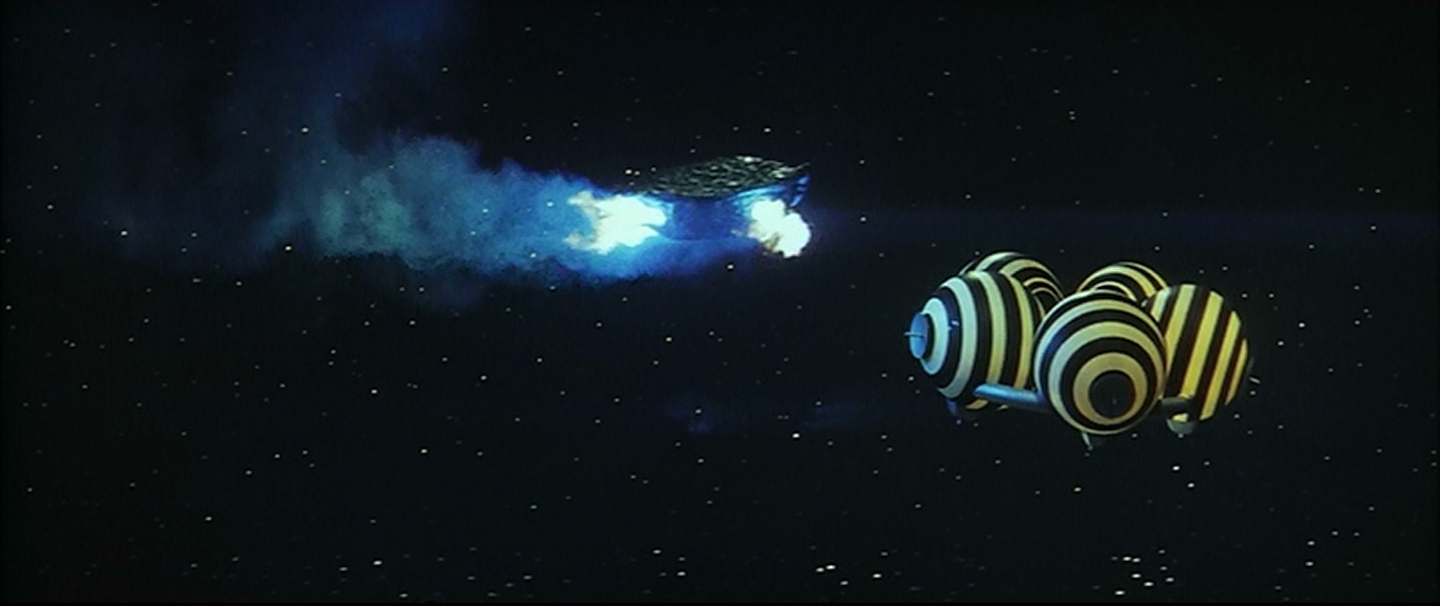
We begin with the standard Alien Invasion. Of course, the aliens want Earth, and this time, their excuse is that Earth is most like their home planet, out of all plents in the universe. Lucky us. However, as the initial attack is approaching Earth, Gamera happens. Gamera just happens to be hanging out in space, as the UFO approaches Earth, and there is immediately a fight. Gamera's fire breath works in space, as it turns out. And apparently, it can breathe in space. But even as the advance scout is destroyed, it calls for reinforcements. Cue the Gamera song over the credits.
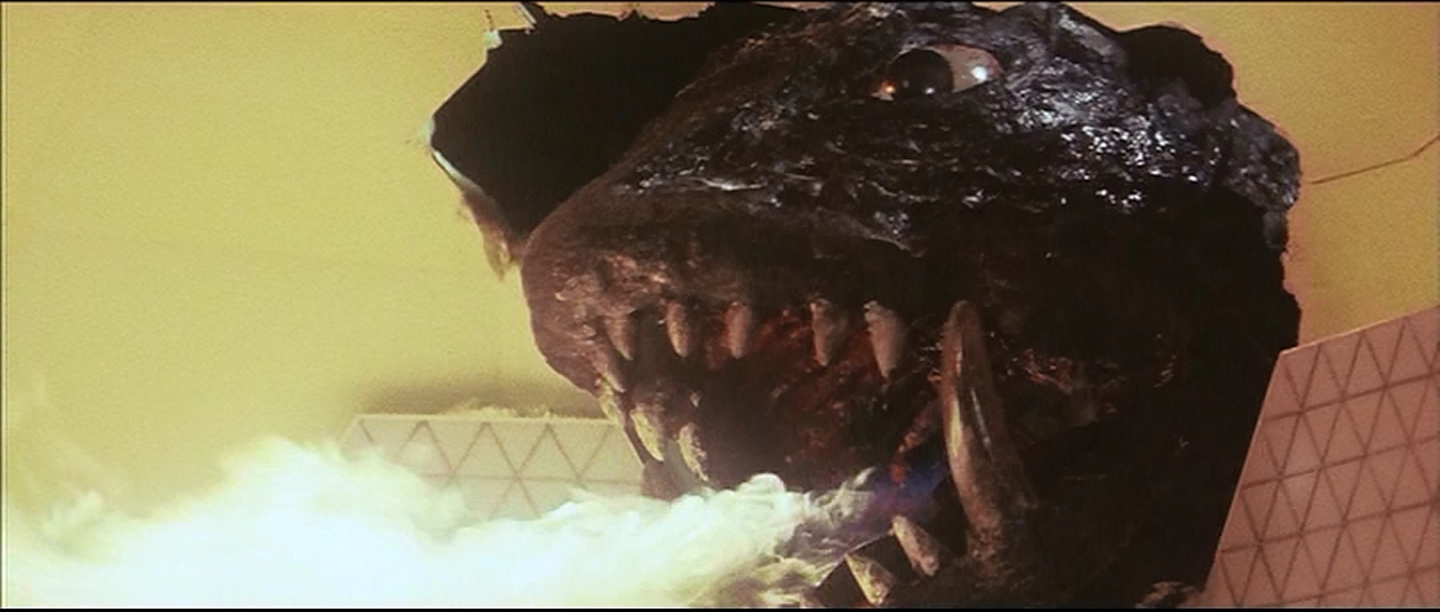
Gamera vs Viras also has the dubious distinction of adding several annoying tropes to the usual annoying Gamera tropes. Not only are there two precocious super-science kids, (Masao and Jim) whose ability to make things work in reverse saves the Earth, but they're Boy Scouts. We meet them as they play around with an experimental minisubmarine, reverse the batteries so that it'll only work in reverse (ho ho).
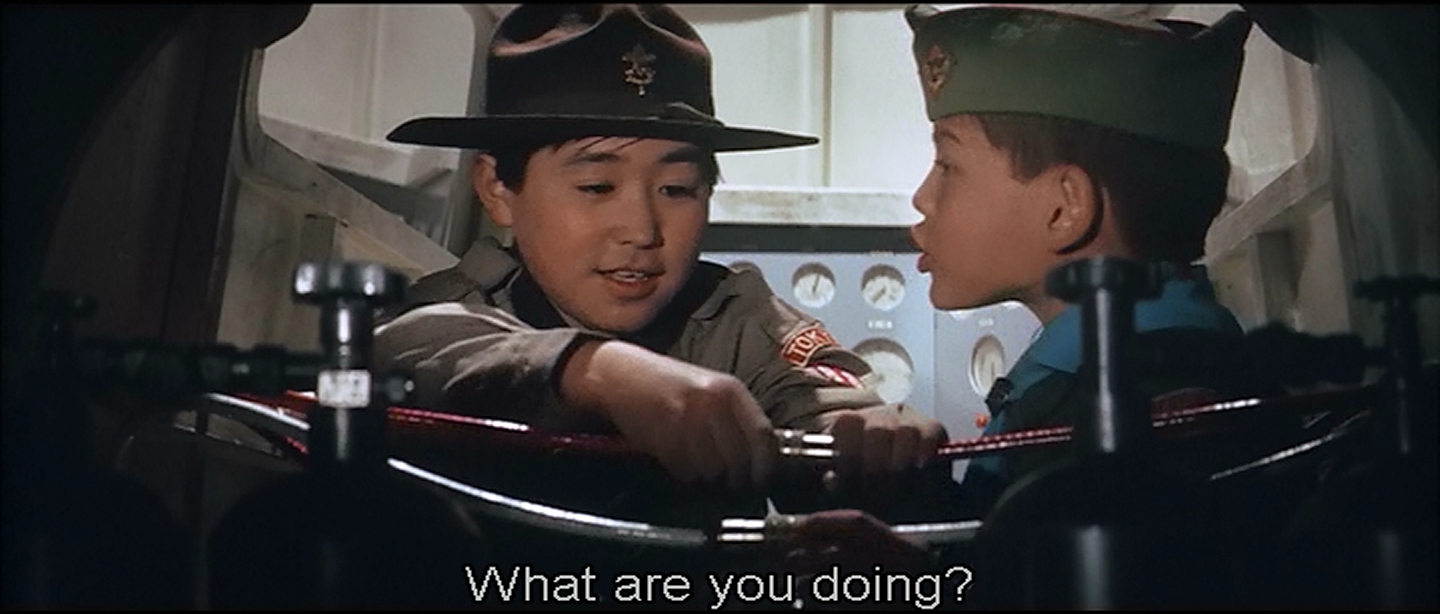
While underwater, Jim points with fear at the giant monster swimming next to them, which Masao points out is only Gamera. Gamera is safe as houses, nothing to worry about. A far cry from the dangerous monster he was. But Gamera's fame hasn't spread past Japan. Although Jim knows a monster when he sees one, Masao knows who it is.
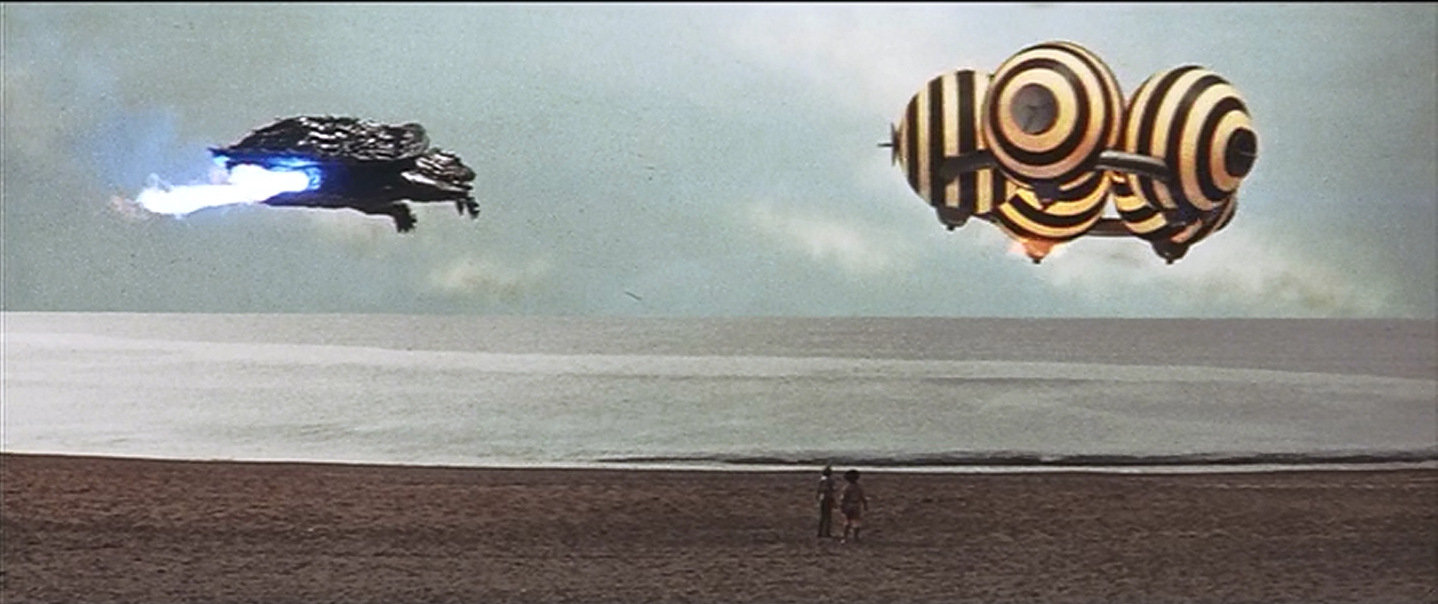
What is painfully obvious is how little money was spent on the production. Masao's sister has a wrist-radio she uses to call him. But it's clearly a compass. And at minute 22, we start with a long montage of what Gamera did in previous films. Sequences from Giant Monster Gamera (tastefully tinted so we won't notice the memories are in black and white), Gamera vs Barugon, and Gamera vs Gyaos. And we're not talking about just a couple of minutes. These are entire sequences. Now, the Shout! factory cut, the original Japanese version of the film, only has eleven minutes of this flashback, although there are more to come. However, longer sections were inserted into the International versions, padding the film by another eighteen minutes. Still, this is close to a seventh of the overall film length. I should point out that use of stock footage was less noted by an audience watching these films in the theater, unable to pause and reference previous films from a private library.
Around this time, Godzilla films start using more and more stock footage, even recycling a shot within a single film. But the greatest abuse of this comes from the desperate measures needed to push out the final Gamera film of the Showa era, Gamera, Supermonster in 1980. Daiei was being purchased by Tokuma Shoten, and can be seen as a cynical attempt to wring money from a dead franchise. More on that when we get to it.
As with Destroy All Monsters, Ebirah, Horror of the Deep, and Invasion of Astro-Monster we have the theme of mind control. The aliens from Viras kidnap the Jim and Masao, threatening to kill them unless Gamera obeys their commands. This is a deal you can make with an intelligent creature capable of reason, much the way Mothra's larva negotiates with Godzilla and Rodan in Ghidorah the Three Headed Monster. The monsters are no longer forces of nature, but characters with thoughts and motivations. Gamera can be held hostage by his love of children. Godzilla can be convinced to attack Ghidorah. After this, however, a device is deployed to control Gamera utterly. As a historical note, the CIA's MKUltra mind-control experiments had been curtailed a second time in 1967, although it was not brought to public knowledge until 1977.
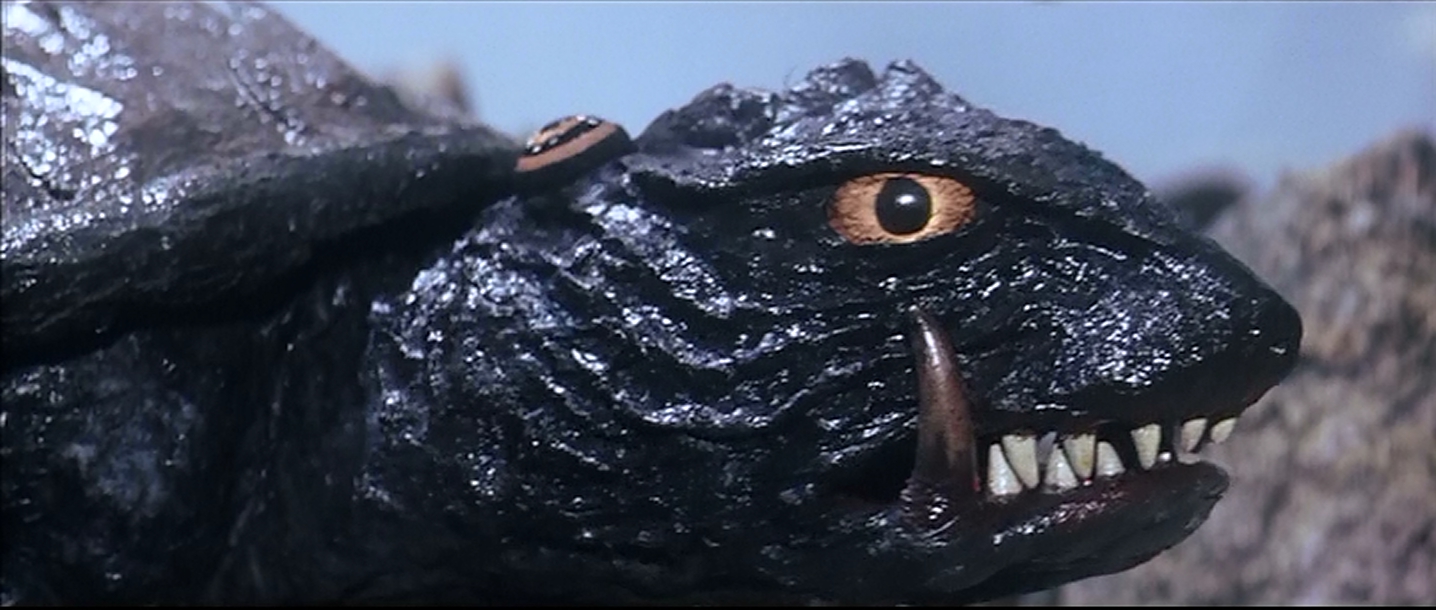
Thus, it's up to the Boy Scouts to rescue the world. They discover that they can order any sort of food they want. I don't think I'd trust any fruit juice an alien ship that kidnapped me would offer, but that's me. The point is to impress the audience with the aliens technology, I suppose. Nor do I think I would try to release a caged monster I found on an alien spacecraft. But the plot must happen.
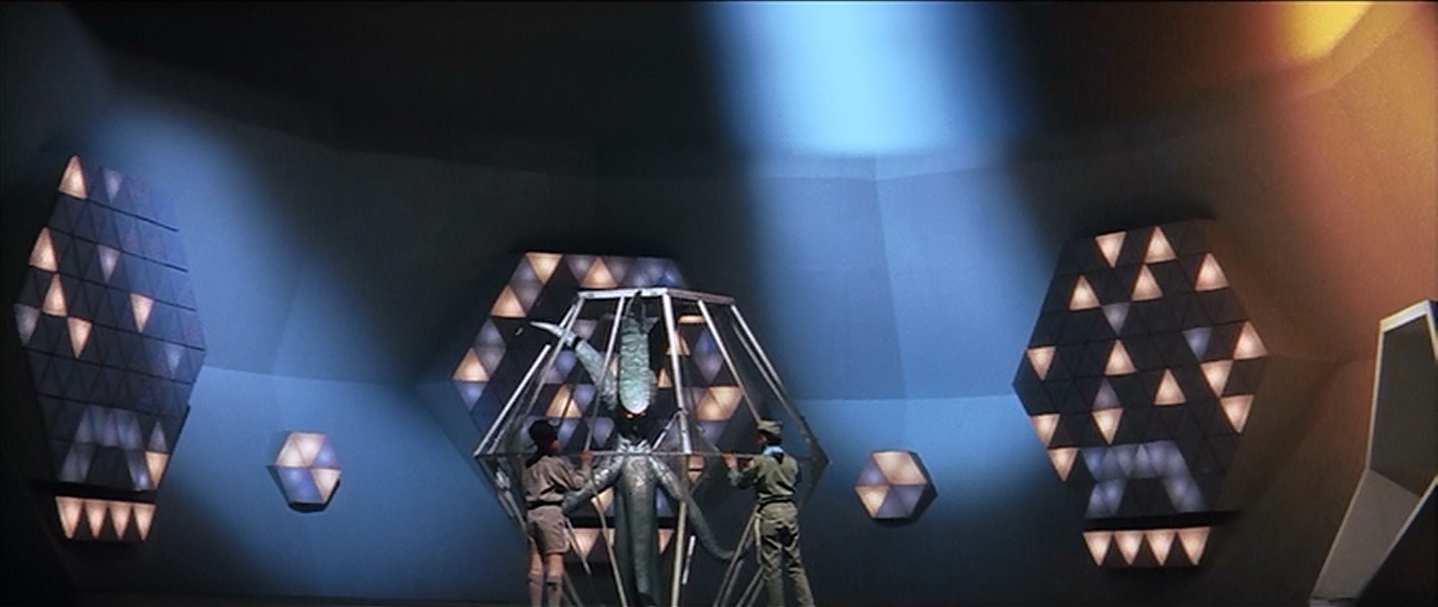
When the aliens command Gamera to attack, by golly it's the Kurobe Dam sequence from Gamera vs Barugon, and then the destruction of Tokyo from Giant Monster Gamera, adding another five minues of stock footage (now sixteen minutes, or one fifth of a seventy-one minute film).
After Japan has been treated badly by Gamera, the UN calls, and says they will not sacrifice the two boys on the space ship and will surrender the Earth rather than allow them to be harmed. Which was not the decision I was expecting. Luckily, the Viras spacecraft wasn't designed for any sort of security, so the computer will just open it's most vulnerable section and let the boys switch the batteries. So clever.
When ordered to attack the boys, Gamera's will overpowers the mind-control ray, and he trashes the alien ship. But what the boys thought was a caged monster is really the ship's commander! It transforms into a gigantic version of itself, and we finally get some monster-on-monster action in the last ten minutes of the film. It is somewhat marred by Gamera allowing Jim and Masao to tell him how to fight. "Use your fiery breath, Gamera!" "Get closer, Gamera!" It would be really annoying backseat driving, but later on, they just shout Gamera's name, offering no instructions, and it's worse.
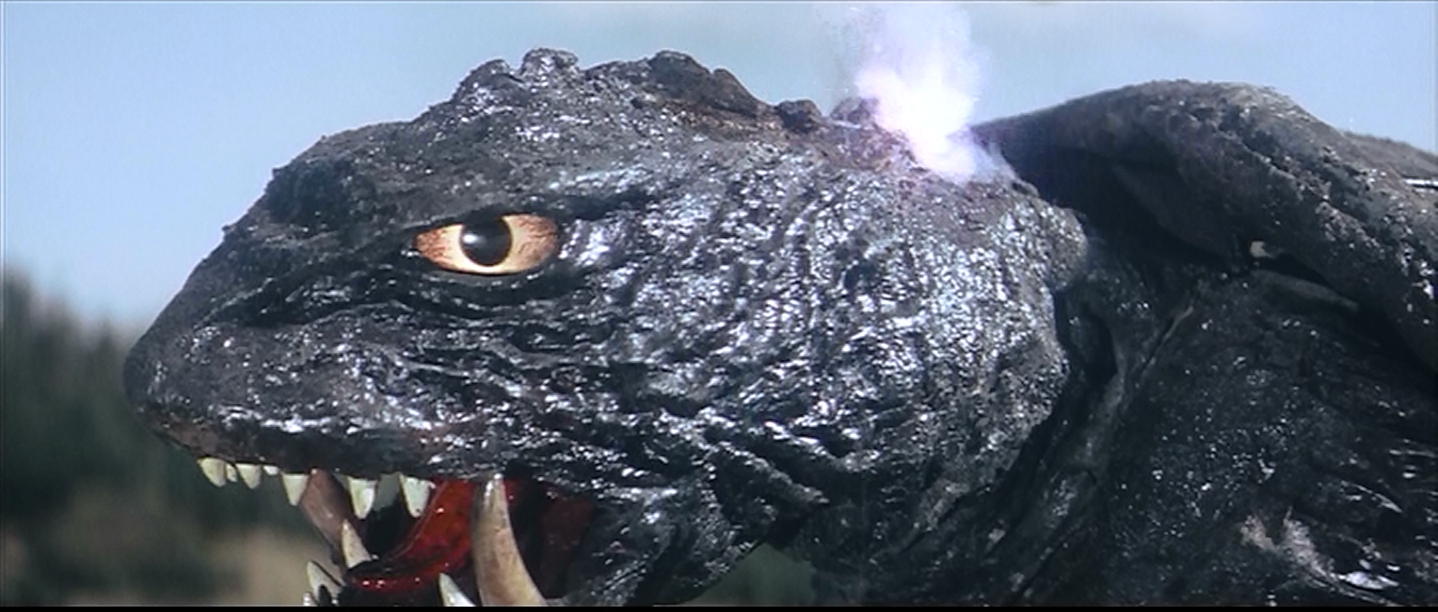
Viras is interesting-looking. Its tentacles sort of conceal the man-in-the-suit's legs, making it look least-human looking of Gamera's foes. It can fly and seal it's trefoil head into a diamond-hard blade, although it looks surprisingly like a lemon-reamer.
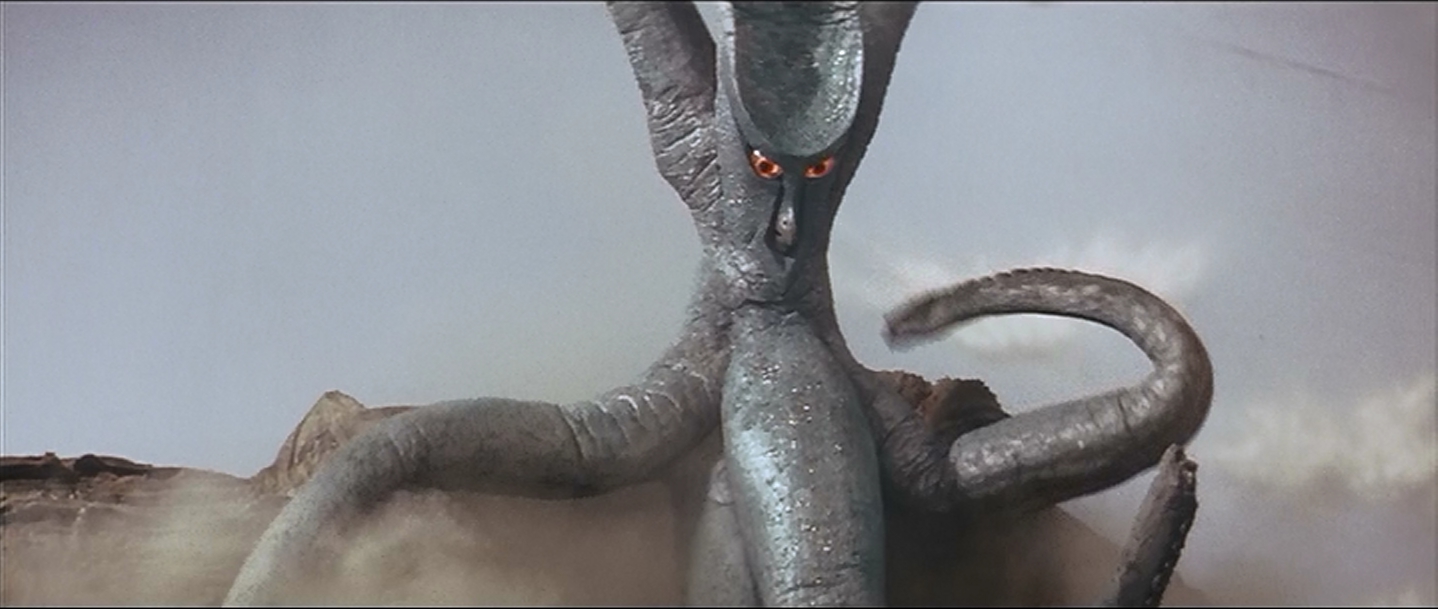
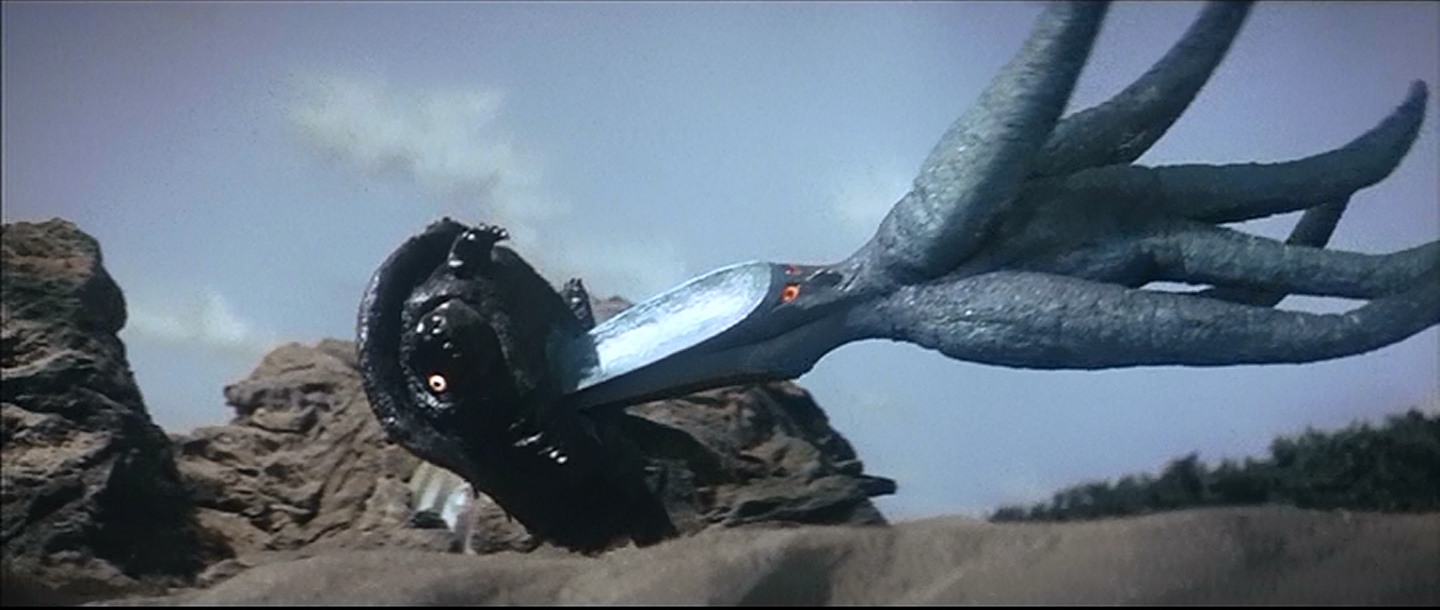
It gets Gamera on its back and stabs him a couple of times. But then Gamera flies high into the atmosphere, freezes it and dumps it into the ocean. After that it's all over but the congratulatory back-slapping.
This is a hard film to sit through. With the repetition, even though I'd seen the other Gamera films months ago, the really annoying kids, and the events that japoen for plot convenience really make this a very ittitating film. But it seems like that was the way monster films were going. The experimentation of last year was over. Money was to be made by pandering to kids, and the dumber plot, the better.
Next up, Godzilla's Revenge, the second film to concentrate on Minilla. I hope I'm up to it.
No comments:
Post a Comment